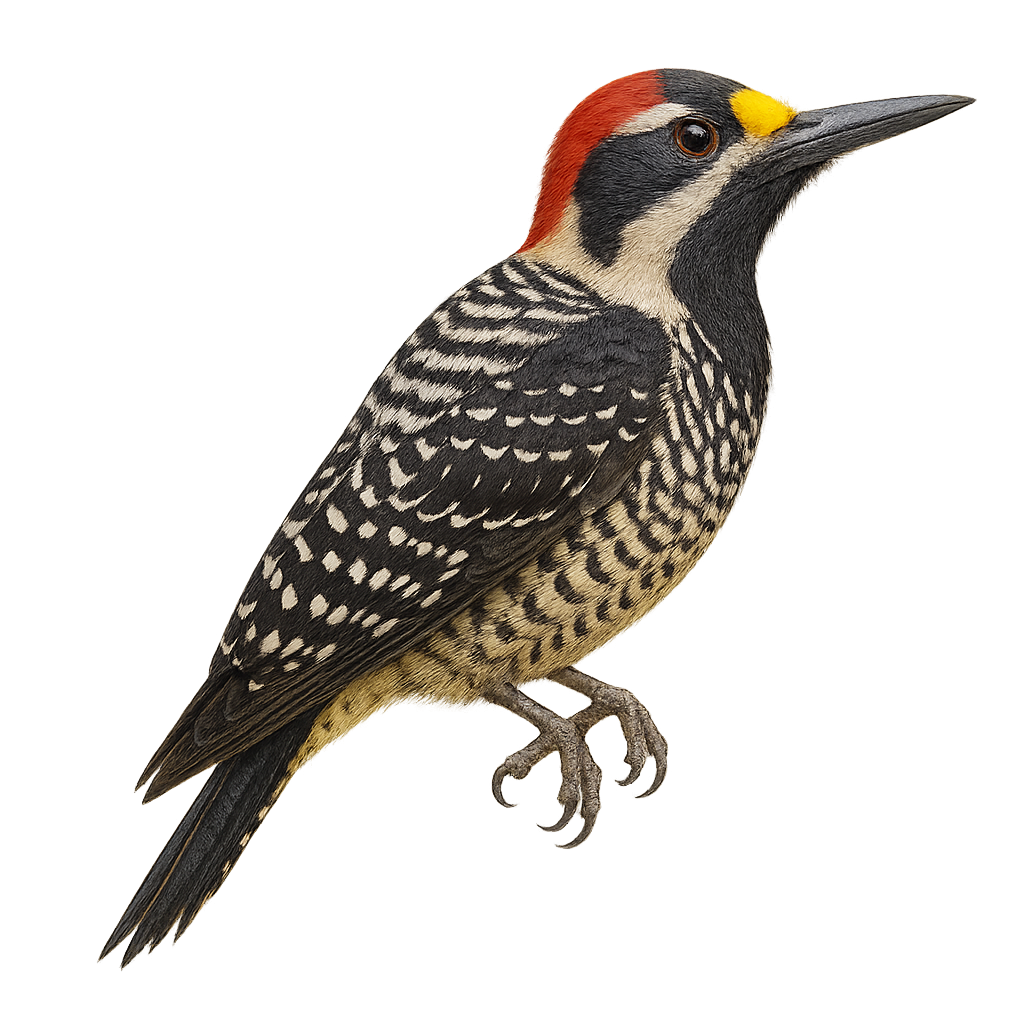Your wildlife photography guide.
Explore the black-cheeked woodpecker in detail, study its behavior, prepare your shots.
Where to observe and photograph the black-cheeked woodpecker in the wild
Learn where and when to spot the black-cheeked woodpecker in the wild, how to identify the species based on distinctive features, and what natural environments it inhabits. The WildlifePhotographer app offers tailored photography tips that reflect the black-cheeked woodpecker’s behavior, helping you capture better wildlife images. Explore the full species profile for key information including description, habitat, active periods, and approach techniques.
Black-cheeked Woodpecker
Scientific name: Melanerpes pucherani

IUCN Status: Least Concern
Family: PICIDAE
Group: Birds
Sensitivity to human approach: Suspicious
Minimum approach distance: 10 m
Courtship display: March to April
Incubation: 13-15 jours
Hatchings: March to May
Habitat:
Tropical forests, mangroves, wooded areas
Activity period :
Primarily active during the day, with peak activity in the morning and late afternoon.
Identification and description:
The Black-cheeked Woodpecker is a colorful and fascinating bird found mainly in the tropical forests of Central America. Its head is adorned with bright red, contrasting with its black cheeks and pale yellow belly. This woodpecker measures about 18 to 20 cm in length and feeds primarily on insects, fruits, and nectar. It is often seen drumming on tree trunks to dislodge its prey. Although relatively common in its natural habitat, it is sometimes threatened by deforestation. Its call is a mix of sharp cries and rapid drumming, making it easily identifiable in the dense canopy.
Recommended lens:
400 mm – adjust based on distance, desired framing (portrait or habitat), and approach conditions.
Photography tips:
To photograph the Black-cheeked Woodpecker, it is advisable to use a telephoto lens of at least 400mm to capture detailed images without disturbing the bird. Look for it in tropical forests where it is often active during the day. Be patient and discreet, as this bird can be suspicious. Listen for its characteristic drumming to locate its position. Opt for the soft light hours of the morning or afternoon to get vibrant color shots.
The WildlifePhotographer App is coming soon!
Be the first to explore the best nature spots, track rutting seasons, log your observations, and observe more wildlife.
Already 1 432 wildlife lovers subscribed worldwide

